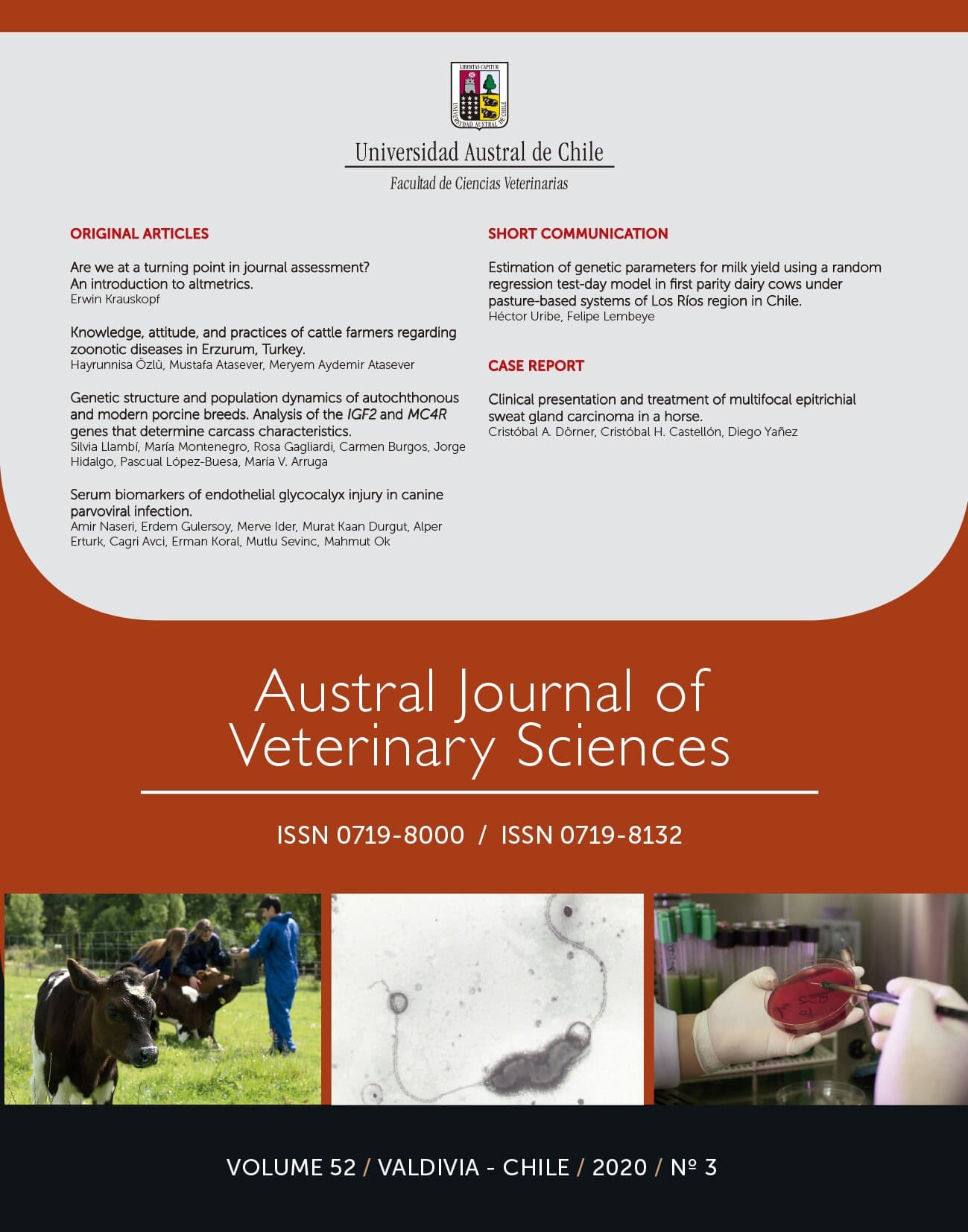Serum biomarkers of endothelial glycocalyx injury in canine parvoviral infection
Conteúdo do artigo principal
Resumo
Canine parvoviral enteritis (PVE) is one of the most common diseases in young dogs. A range of diseases and inflammatory conditions can cause endothelial glycocalyx (eGCX) disruption, therefore, this study aimed to determine the presence of eGCX damage in dogs with PVE using serum biomarkers of eGCX, and to evaluate their prognostic importance among survivor and non-survivor dogs. Twenty dogs diagnosed with PVE and 10 healthy dogs of both sexes, mixed-breed, and under 6 months of age were included in the study. Clinical examination, blood gas analysis, and complete blood cell counts of the dogs were performed. To detect the eGCX injury, serum endothelial cell-specific molecule-1 (ESM-1), syndecan-1 (SDC-1), angiopoietin-2 (Ang-2), and heparan sulfate (HS) levels were measured. Results showed that at the time of admission serum levels of ESM-1 were higher in dogs with PVE compared to that of the healthy dogs. Dogs with PVE were further assigned into two groups: survivors (n:10) and non-survivors (n:10). The ESM-1 had high sensitivity and specificity to differentiate between survivor and non-survivor dogs with values of 100% and 67%, respectively, with at an optimum cut-off point of ≥460 pg/mL. We concluded that higher levels of ESM-1 in dogs with PVE may indicate eGCX injury when compared to healthy dogs. Also, the high levels of serum ESM-1 in non-survivor dogs suggest that serum ESM-1 may carry some prognostic usefulness for predicting mortality in dogs with PVE.

